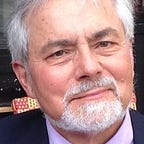Pleasures & Perils of Writing Non-Fiction, Post #3
In Post #2, I said a non-fiction writer’s process has four overlapping phases. Let’s discuss Phase One:
1. LOCATE AND COLLECT ACCURATE INFORMATION: In short, do your research. What your research looks like day-to-day depends on your objective. There are two types.
The first type of objective is to reveal totally new information to human beings. This requires original research, meaning that you examine a phenomenon that no one has ever examined before. Many research topics of scientists such as chemists and biologists are good examples, for their goal is to make paradigm-shifting discoveries.
Social scientists sometimes do original research. An example is Serhii Plokhy, author of the just-published “Nuclear Folly,” about the Cuban Missile Crisis. Previously, several books by respected authors had discussed that event in voluminous detail. Yet Plokhy’s relentless research is now revealing directly relevant documents that were previously unknown to the general public — and to those earlier authors.
The second type of objective is to begin with information that’s publicly available, often in published form, then analyze and recombine it so that fresh insights result. Much non-fiction writing is of this type, so I’ll discuss it further, using my books as examples.
“Encountering the Chinese” is a book for Westerners interacting professionally with Chinese people. How did I locate information? I worked with a co-author. As a Chinese person, Hu Wenzhong knew Chinese values and behavior, and he had worked in the West. As an interculturalist, I knew what causes misunderstandings for people in unfamiliar cultures, and I was working in China. Initially my role was to select the topics to be covered; Wenzhong’s role was to supply the facts of Chinese culture. These roles soon blurred.
“The Aptitude Myth” is a history book. I was not a trained historian, i.e., trained to unearth long-lost documents and interpret their significance. No problem! I was content to work with “secondary sources,” the publications of established historians in journals and books.
This is when I discovered a free, highly useful resource, hugely appreciated by anyone like me who completed graduate work using library card catalogs: the Internet, notably Google Scholar, Google Books, and BarnesAndNoble.com (superior to Amazon.com because B&N provides much more information about each book). This is also when I came to appreciate the value of combing through the bibliography of every journal article and book I was using. Bibliographies are the final element of what I call “The Four Pillars of Research.”
I know personally how much research goes into an encyclopedia entry. Yet I rarely use an encyclopedia, including Wikipedia, as my sole source for any fact. Use of encyclopedias suggests laziness. But they can be helpful; they provide bibliographies and good overviews.
Newspapers and news magazines, print or online, are acceptable information sources. Prefer those with national circulation because they have robust fact-checking operations. But stay far away from social media (unless your research topic is social media!).
“The Drive to Learn” and “A Mirror for Americans” are grounded in the research of hundreds of anthropologists and other social scientists who, since 1970, have been traveling to East Asia to study why students there tend to be academically superior to their American peers. I collected more than enough information from their books and journal articles, which I readily located using The Four Pillars (especially their bibliographies).
Writers of non-fiction are entitled to their own opinions, but not to their own facts. The purpose of Endnotes is so that readers have citations with which to double-check the accuracy of facts you discuss. Make sure no one can discount your opinions because your facts are false.
